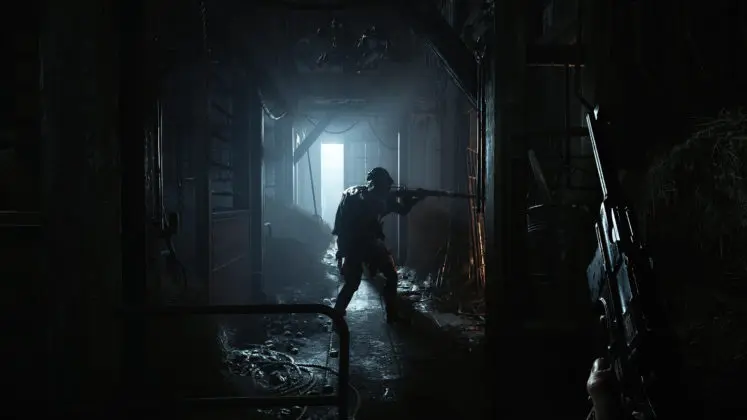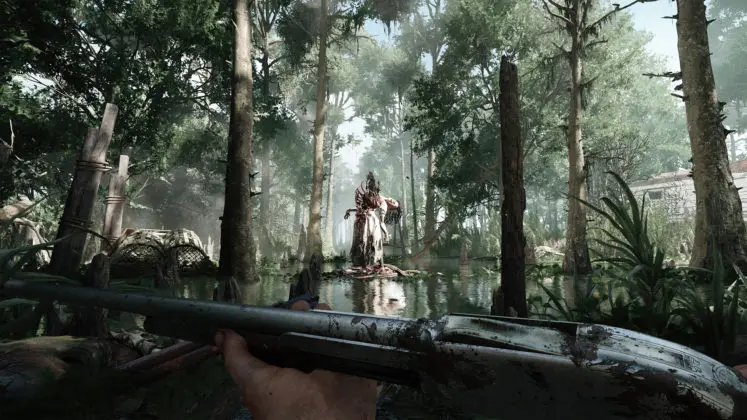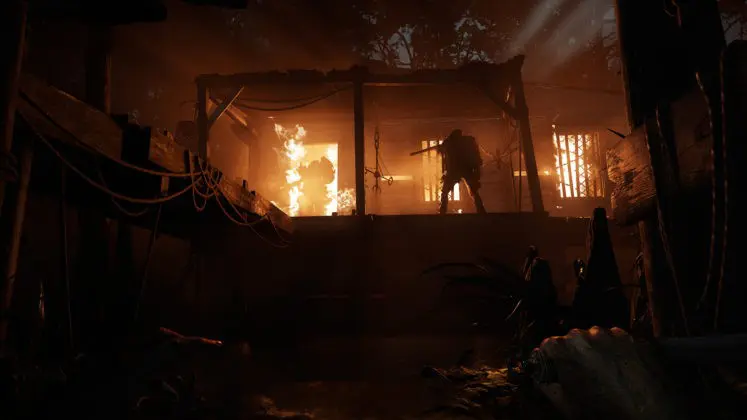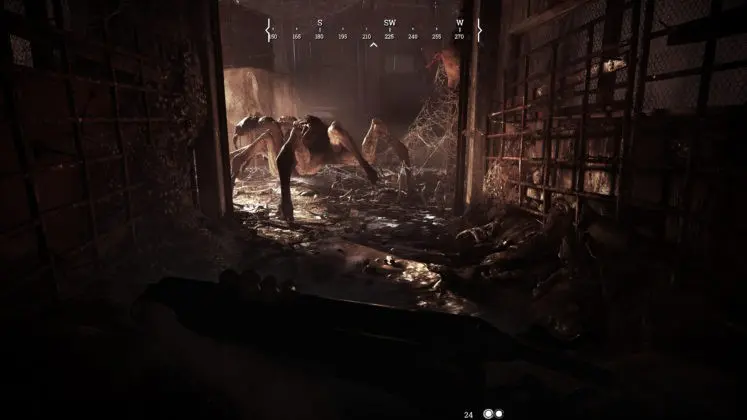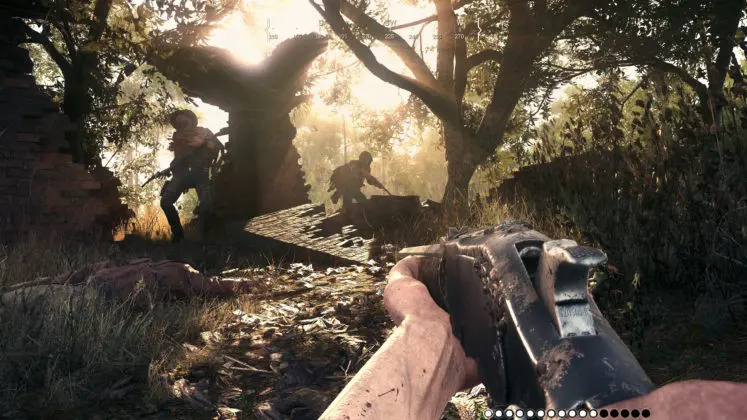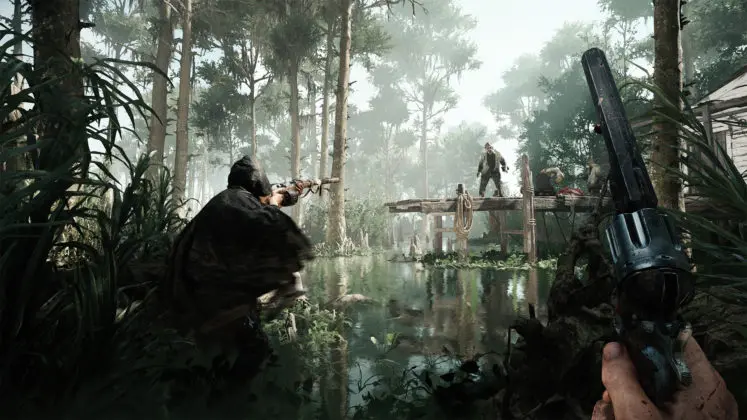Hunt: Showdown in its most basic form is a first-person shooter survival horror.
But, in its entirety, though it is so much more.
The game’s premise is simple: You and your partner/s are hunters-cum-cowboy’s and load into a map based on 1895 Louisiana. Your task? To hunt one or more of the grotesque creatures stalking the bayou.
The challenge does not stop there, as you’re not the only team with your eye on collecting the sweet bounty that’s awarded for claiming your mark. For all that’s lurking in the shadows, your biggest challenge comes from the games PvP element – other Hunters – and this is where Hunt: Showdown starts to stand out from the already saturated battle royale market.
About Hunt: Showdown
Hunt is brought to you by none other than Crytek, yes the same company that birthed Crysis and helped bring the Farcry series to life. With Crytek having already cemented themselves as innovators within the industry I was excited to see what their latest game had to offer.
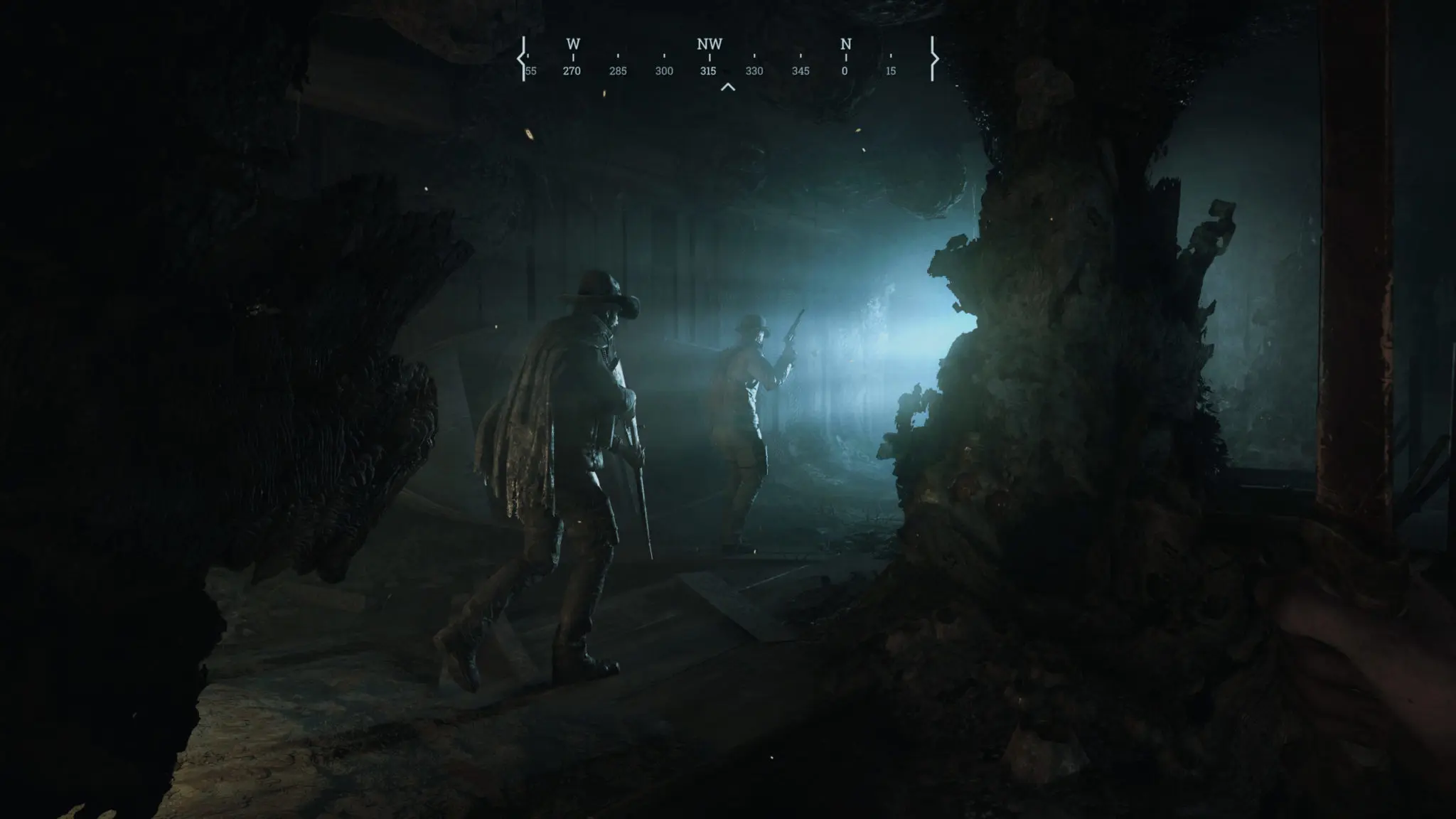
Hunt: Showdown Gameplay
The game currently only offers two game modes.
Quickplay:
In quickplay, players are damned and the only way of saving themselves is by acquiring “wellspring” before the round ends. Wellspring can be collected in one of two ways, firstly by activating rifts, and secondly by stealing it from other dead hunters that have already picked it up. Whichever player is left holding the wellspring at the end wins. This game mode can only be played solo and basically acts as some extra content for the games other, far superior mode.
Bounty Hunt:
It’s in the second game mode that Hunt really shines. In Bounty Hunt, players can play as part of a team, working together to banish either one or two monsters that have had bounties placed upon them.
To find the marks, players must use an ability called “Dark Sight”. Using Dark Sight highlights special points on the map which players must then go to and look for a clue. Once the team has found and inspected three clues the location of the monster will be shown to them and then the fun begins.
The game currently only offers three “boss” monsters in the form of Spider, Butcher, and Assassin, with each having their own abilities, movement patterns, personalities, etc.
Butcher, for example, is a walking tank that’ll take big swings at you or your partner, while Assassin can transform into a swarm of insects and move far quicker to strike and then slink back to the shadows.
To take down these monstrosities, players must work together as a team as they offer real challenges and will not go quietly. Once you have felled the beast, you must “banish” them; you then have the option of hunting another target (if there is one) or extracting in a set zone.
As mentioned earlier, by far the biggest threat to you in this game mode is the other teams. Each game consists of a minimum of four teams competing towards the same goal and can have up to three players per team. Once a team has banished a monster, that team then becomes visible to all others and the bounty can be stolen from them if they’re defeated.
Hunt: Showdown Setting
The game currently features two maps which are both stars in their own rights.
Crytek has managed to capture the soul of the Louisiana swamplands perfectly and the setting adds to what is an already tense gaming experience. Both maps feature abandoned shacks, swamps and farmland, and populates them with many nasty critters and puts them between you and your prey, adding a whole new element of PvE to go along with your PvP experience.
The maps have randomly generated spawn points for enemies, bosses, and players, so each new game will keep you on your toes. Add to that the fact that games can be held during four different times of day (including the pitch black of night) and you’re in for a hell-raising experience.
Given the fact that the game is set in 19th century Louisiana, the weapons available to you are primitive to say the least. They range from six-shooters and shotguns to crossbows and axes. Each weapon has its uses and each team should carry a variety to help them with any situation they encounter, which can include everything from headshotting zombies to tackling armoured behemoths and hell hounds.
Players will also have to think about each path they take to the next clue or monster, as the environments produce their own challenges. Will you take a trip through the zombie-infested settlement? Maybe risk wading through the swamp water to be attacked by unholy creatures that lurk beneath the waters unseen? The game is built from the ground up to keep players constantly questioning themselves; and keep those goosebumps firmly raised on their skin.
Hunt: Showdown’s Graphics and Sound
Given the fact that Crytek’s biggest IP – Crysis – was once the standard for graphical comparison, the bar was already set high for them before Hunt’s inception, and boy it doesn’t disappoint.
The scenery is constantly filled with dying shrubbery, murky water, flames, decrepit buildings, and all manner of blood-soaked paraphernalia which is all expertly portrayed in a way that only Crytek know-how.
In a game where you’re constantly scanning your environment for where your next threat to life is coming from, Crytek has managed to create something special that still holds its unnerving beauty even after several weeks of playing.
The system I used for review was running an Nvidia GTX 1070, this managed to play the game with most settings maxed out at a consistent 60 fps at 1080p. If you want to improve on that resolution though, you’re going to have to invest in some serious hardware as there aren’t any GPU’s currently able to give you a consistent gameplay experience on the top end of 4k.
The graphics were originally more demanding but after update 1.0 they received a slight downgrade to keep in line with consoles. The console versions themselves are still a sight to behold and run smoothly on the PS4 Pro and One X. The sound in the game is incredibly well done and plays an important part while on the Hunt, whether it be listening out for potential threats or making sure you’re not making too much noise yourself to alert the horde of zombies ready to charge at you at a moment’s notice. The sound adds another element to the game just to keep you on the edge of your seat just a bit more.
Our Final Summary for Hunt: Showdown
All in all Hunt: Showdown has started with a very strong foundation mixing PvE and PvP elements fluidly together to create an original “battle royale” experience, and wrapping it up in a not so shiny 19th-century feast for the eyes.
The only let down this game currently has is the lack of other game modes and a limited amount of maps on offer. This could affect the games overall replayability in the long term, but should not deter anybody from missing out on Crytek’s innovative venture into the battle royale scene.
If you’ve enjoyed our review of Hunt: Showdown and are thinking of picking this game up, help support FinalBoss and purchase through our affiliate links below.


